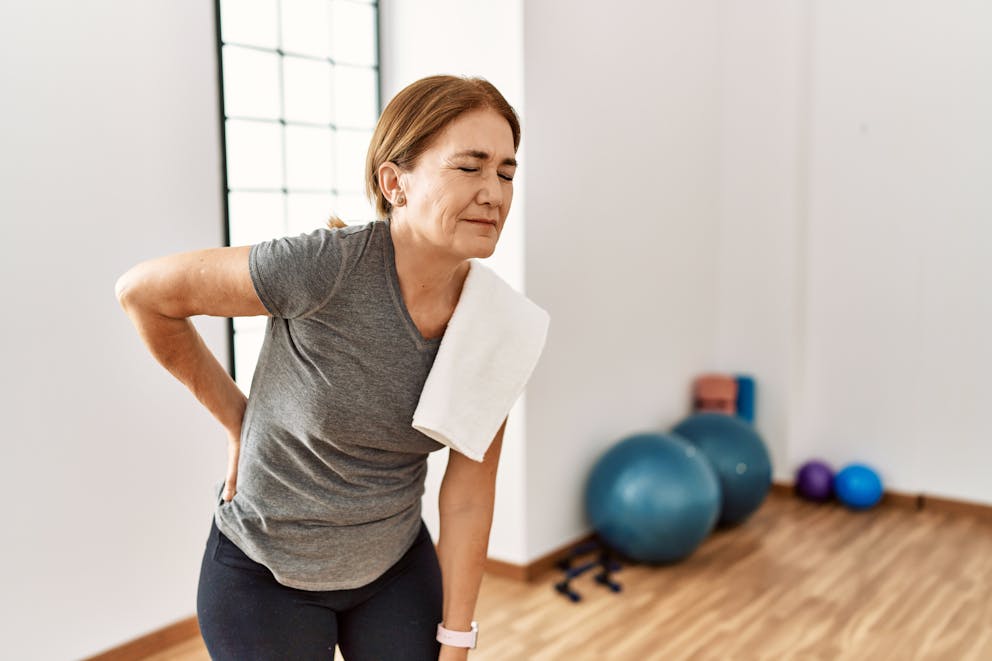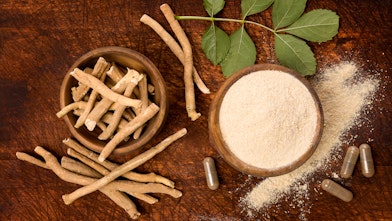The Best Exercise for Spondylolisthesis
Spondylolisthesis exercises can be a confusing topic, especially when you're already dealing with the discomfort of a slipped vertebra. This condition arises when a bone in your lower back slides forward over the one below it.
This situation can cause a dull ache, pain radiating down your legs, and, in some cases, even bowel or bladder issues. But did you know working out helps support this area? You'll learn about the best approach to take.
I have prepared spondylolisthesis exercises that can give significant relief and help strengthen the support needed for someone dealing with this pain.
Understanding Spondylolisthesis
Spondylolisthesis occurs when one of your vertebrae, usually in the lumbar spine (lower back), slips forward out of its normal position. It typically occurs with the L5 vertebra, slipping over the sacrum.
A fracture or defect in a part of the vertebra called the pars interarticularis could be the cause. It could also be degenerative changes or other causes. This instability often leads to pain.
The Mechanics of Vertebral Slippage
Visualize your vertebrae as a stack of building blocks held in place by ligaments and small joints.
Now imagine one of those blocks slipping slightly out of alignment. That's spondylolisthesis – a forward shift of one vertebra over another.
As the spinal cord travels down, it can sometimes get a little bend, possibly pinching. Exercises like hamstring stretches will alleviate that tension.

Types of Spondylolisthesis
Spondylolisthesis is graded by how much slippage you have experienced. Grade one is up to a 25% slippage, and grades can go up from there all the way up to Grade Five in the most extreme cases.
Less than 25% slippage is Grade 1.
The slippage between 25-50% is Grade 2.
50%-75% slippage is Grade 3.
75%-100% slippage is Grade 4.
Common Symptoms and When to Worry
Spondylolisthesis presents with many different indicators, but here are a few to watch out for.
The most frequent symptom is lower back pain, sometimes hurting more with activity or bending motions.
Sciatica, or sharp pain going down your leg, can occur.
Hamstring discomfort often appears when bending over or raising your legs.
Weakness is often seen when experiencing a forward spinal shift.
Bladder difficulties can occur in a severe scenario involving nerve compression.
If you experience any sudden changes in bowel or bladder function, talk to your doctor right away.
Other symptoms that warrant contacting a physician include tingling or weakness in the feet and legs and loss of flexibility or inability to exercise as you used to.
Spondylolisthesis Exercises: What Works?
Focus on core strengthening and avoid excessive bending and twisting. Anything that could cause twisting is not recommended. That should automatically give you ideas about activities you might already be doing.
One study suggests exercise can improve outcomes in symptoms, muscle strength, and pain in individuals with spondylolisthesis. Here is the 2022 review study by Dong-woo.
A workout plan to strengthen the area will help stabilize the muscles in your back, including your lower abdomen.
You want to visualize keeping your back flat. Some experts also suggest that the issue is not that the vertebra goes back but rather that it is moving forward.
Exercises to Target Spinal Muscles and Aid Alignment
When performing any of the moves below, you need to engage your lower stomach muscles.
Picture bringing the two parts of your lower hips closer together. You also need to maintain proper posture. Good posture keeps everything straight, addressing the vertebral shift.

Spondylolisthesis Exercises and Benefits
Pelvic Tilts
How to do it: Lie on your back, knees bent. Tighten your abdominals to tilt your pelvis back.
Benefit: Strengthens lower abs and helps align the spine.
Knee-to-Chest
How to do it: Lie on your back, knees bent. Bring one or both knees to the chest.
Benefit: Stretches the lower back and strengthens the abdominals.
Plank
How to do it: Hold a push-up position on your forearms, keeping a straight line from head to heels.
Benefit: Strengthens the core without stressing the lower back.
Bird Dog
How to do it: On hands and knees, extend the opposite arm and leg. Keep back straight.
Benefit: Improves stability and strengthens the back and core.
Hamstring Curls
How to do it: Using a machine or lying down, curl heels towards the buttocks.
Benefit: Strengthens hamstrings.
Cat-Cow Stretch
How to do it: On hands and knees, arch and round your back.
Benefit: Improves spinal flexibility.
Swimming
How to do it: Swim in water.
Benefit: A low-impact activity that strengthens different parts of the back without adding spinal pressure.
Exercises where you're bringing the leg or body forward and leaning in can be very therapeutic. Doing planks and walking can also provide relief for this condition.
What to Avoid for People with Spondylolisthesis
Here are moves to avoid or modify if you have spondylolisthesis.
Avoid exercises that involve spinal extension, like the yoga cobra stretch, where you bring your body upwards with your neck.
Also, avoid full-body weightlifting exercises that put a lot of pressure on your lumbar area, such as lifting with a bar across your shoulders. Deadlifts and Romanian deadlifts can also strain the back.
Spondylolisthesis Exercise Progression
Consistency is crucial for exercise; avoid working out sporadically with long gaps in between sessions. A 10-day split is definitely not recommended.
This approach doesn't benefit someone who may lack the foundational strength to sustain it.
Starting with exercises three times per week could help create the adaptation, strengthening your muscles and creating nervous system connections.
As your strength and endurance progress over several months, you might transition from a three-day-a-week regimen to something like two to three days.
You can actually lift really lightweight but still get an intense workout that's focused on slow repetitions.
Supporting Spinal Health with the Right Nutrition
Managing spondylolisthesis requires a combination of targeted exercises and proper nutrition to reduce inflammation and support spinal health.
While strengthening core muscles and improving flexibility can help alleviate pain, dietary choices also play a crucial role in managing symptoms.
For individuals with digestive sensitivities, following a FODMAP diet may help reduce bloating and inflammation, which can contribute to discomfort and stiffness.
A low-FODMAP approach eliminates common gut irritants like certain dairy products, legumes, and high-fructose foods, making digestion easier and reducing systemic inflammation.
Pairing this dietary strategy with an anti-inflammatory keto lifestyle and intermittent fasting can further enhance recovery by promoting better nutrient absorption and reducing strain on the body.
By combining proper exercise with mindful eating, individuals with spondylolisthesis can improve mobility, minimize pain, and support long-term spinal health.
Conclusion
Spondylolisthesis exercises can help you avoid complications. When done correctly, these workouts, combined with reducing inflammation, offer the best chance for relieving pain.
Besides spondylolisthesis exercises, consider dietary adjustments and supplements. Vitamin D3 is often recommended for back pain.
Intermittent fasting may improve blood flow, while a Healthy Keto diet can lower insulin and reduce pressure on the discs.
FAQs about spondylolisthesis exercises
What is the best exercise for spondylolisthesis?
The best workouts focus on core stability while keeping your back straight and avoiding hyperextension, excessive bending, or twisting.
Good choices include planks, knee-to-chest stretches, pelvic tilts, and gentle core work on your back. These types of exercises are best at stabilizing the body.
What is the grade 1 exercise for spondylolisthesis?
For Grade 1 spondylolisthesis, good starting points include pelvic tilts, gentle knee-to-chest stretches, and modified planks (on knees if needed). Start with exercises that are gentle yet still engage your core.
Previous blog
Are Nuts Making You Gain Weight?Next blog
The Benefits of EucalyptusTags

Popular
08/21/2024
55.7K views
02/23/2025
46.8K views
11/18/2024
281.2K views
03/18/2024
11/21/2022




